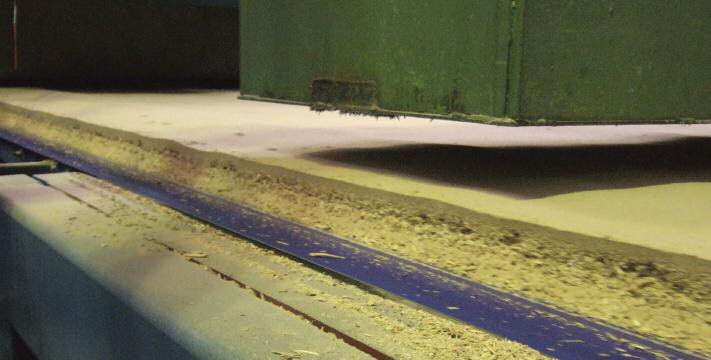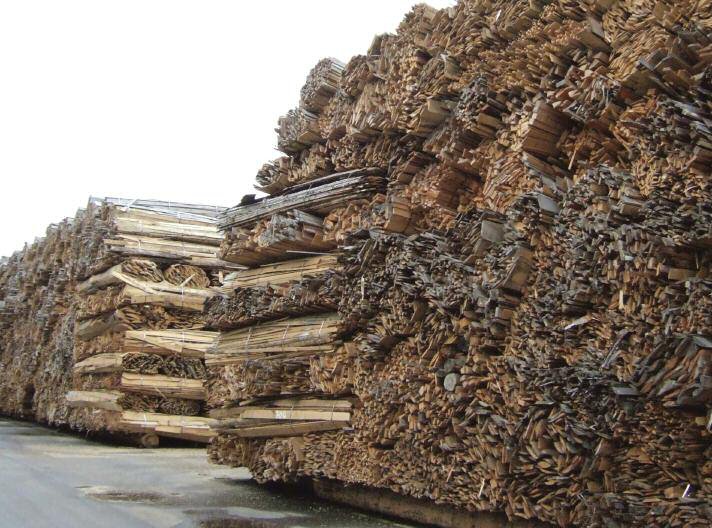Europe looking up, North America staying down
15 November 2010After the very downbeat report on 2008 in last year’s survey (WBPI Issue 5, 2009), our survey of 2009 shows some improvement in demand from the third quarter in Europe and earlier curtailments of production were able to be reversed, while some planned further cuts were avoided.
There was, however, one closure made in 2009 in the EU15 countries. Short-time orking was commonplace again last year, as manufacturers tried to match supply more closely to demand.
The North American market remains very depressed and figures for housing starts also continue to make depressing reading, with little hope on the horizon at this time.
In addition to a difficult market, particleboard manufacturers on both continents have had to continue to contend with ever-tightening formaldehyde emission regulations and a serious threat to their wood raw material supply from subsidies given to the biomass energy sector in both Europe and North America. The latter region has also had the CARB and boiler MACT emissions regulations to deal with.
This survey of the particleboard industry in 2009 shows that aggregate total European and North American capacity increased 4.65% over 2008, solely due to increases in Europe, while North America remained stagnant, as it is forecast to do, at best, going forward.
Many mills in both regions are still operating below capacity due to the market conditions, but for the purposes of a meaningful survey, readers will understand that we can only give actual capacity figures for the mills and lines, to allow meaningful comparisons year-on-year.
North America
In the US, the picture is one of continuing doom and gloom as the building and construction sectors fail to show any real signs of recovery.
The two Virginian mills, ATC Panels Franklin and Waverly Particleboard, were temporarily closed during 2008, remained closed in 2009 and the same is true for 2010. They are still listed for 2009, but their capacities are again not included in the totals.
There are two mills in our listing for Mexico which had not previously appeared.
They are Ponderplay in Durango and Taosa Paneles in Ocotlán. They bring the national total of mills to nine and increase North American capacity accordingly compared to last year’s survey, but this is not a real increase of course in terms of year-on-year comparisons.
Overall, there were only slight changes in capacity during 2009 due to minor adjustments and those two Mexican mills, with no new closures or new capacity reported in North America.
EU15 Countries
The EU15 countries saw capacity rise by around 200,000m3 during 2009 as a result of a combination of closures and new lines and the total recorded capacity is 31,356,000m3 per annum.
Among the closures made in 2009, we reported in last year’s survey that Spanboard in Coleraine, Northern Ireland, UK (part of the Sonae Indústria Group) had closed in the January, although of course it still appeared in the capacity listings, which were for 2008. That mill has thus been removed from our 2009 listing.
German panel maker Pfleiderer agreed short-time working at its Gschwend works in March 2009 to run to August 2010. As we understand that the mill is still operational to some degree, it has been included in the listings for 2009 under its nominal capacity.
On the positive side, Pfleiderer also reported an overall improvement in demand and prices for its particleboard in that period, with exports better than the domestic market and in August 2009 announced reversal of much of its short-time working.
In May 2009, the Austrian particleboard maker Novopan of Leoben, which had idled its 200,000m3 capacity plant, originally until June, decided to go for permanent closure.
Sonae’s German subsidiary Glunz closed its Kaisersesch raw board plant (335,000m3) in October 2009 and followed this with the closure of its Duisberg mill as well(530,000m3).
In Belgium, particleboard maker Linopan of Wielsbeke closed its 250,000m3 plant at the end of 2009. This line is to be transferred to Kronospan’s Riga plant in Latvia for start-up in 2011.
These mills thus remain in the 2009 listing but will be removed for 2010.
The news from ‘greater Europe’ is not all about closures and short-time working by any means. In both the EU15 countries and those outside the EU, plans are afoot for new particleboard capacity.
Countries in the EU15 group with new capacity planned are France and Sweden.
Linex Panneaux of Yvetot, France has an existing 11-daylight press which was originally commissioned in 1989 and upgraded in 2000. It plans to replace this with a Dieffenbacher CPS continuous press of 2.8x55m. Delivery of the equipment is planned to commence this October, with the first board due out of the press in the second quarter of 2011.
The existing line was shown in our listing of 2008 capacity last year at 560,000m3, and is shown again for 2009, but on completion of the replacement line, this figure will increase to 660,000m3 during 2011.
Also in France, Swedspan, the IKEA subsidiary which bought the former Sonae/Isoroy particleboard plant in Lure early this year, plans to invest to increase capacity from 450,000m3 to 550,000m3 during 2011. It will also add low formaldehyde emission and lighter-weight boards to its range.
In Sweden, Swedspan again has plans to increase capacity – this time at its Hultsfred mill where it intends to add 50% to its current 400,000m3, taking it up to 600,000m3 by mid-2011. The mill’s Metso Contipress already allowed for extension from 35.4m to 39.35m and this will be carried out by Siempelkamp, which of course acquired the press assets of Metso in 2007.
Other Europe
Meanwhile, outside the EU15 countries, several expansion plans are also underway.
Kastamonu Entegre of Turkey plans to increase the capacity of its Dieffenbacher CPS 2.1x37.1m Tever line in Gebze from 250,000m3 to 290,000m3 during 2010.
It is also building a completely new line, with a Siempelkamp ContiRoll of 2.1x37.1m, at Gebze, and that will produce 50,000m3 during 2010 and have a capacity of 450,000m3 in 2011.
Once that new line is fully operational, the older line will be shut down and moved to Prolemn, Romania, where it will have increased capacity of 480,000m3. It is planned to be in operation by the end of 2011.
Kronospan’s line at Novovolynsk, Ukraine, started production in June 2009.
The line the company planned for Lapovo in Serbia in June 2009 was delayed to 2010 due to issues with land acquisition, regulatory permissions and a decision to increase the originally-planned capacity of the line and was under commissioning in June 2010. It has a secondhand multiopening press line and will have a capacity of 350,000m3 in 2011.
In Belarus, Lithuanian company Vakaru Medienos Grupe (VMG Industries Ltd) is building a new line in Mogilev with a full supply by Siempelkamp, ordered in June 2010, including a 7ftx15.5m ContiRoll press with a capacity of 165,000m3 per annum. Sole customer will be IKEA when the line goes into production, probably at the end of 2011.
Also in Belarus, the company Ivatsevichdrev has purchased a complete line from Siempelkamp, incorporating a 7ftx28.8m ContiRoll press with a capacity of 330,000m3. The project was originally prepared in 2008, but has been awaiting finance and now has a government guarantee. Construction commenced in the first half of 2010, with full capacity anticipated by end-2011.
VMG also owns Klaipeda Wood, which is reported to have a particleboard line with annual capacity of about 130,000m3 in Lithuania.
Meanwhile, two particleboard lines, which both belonged to ACB Laminat of Brunflo Sweden, where they had a joint nameplate capacity of 170,000m3, have been acquired by a Russian investment fund and are thought likely to be transferred to an as yet unnamed site in the Chuvash Republic and brought back into production at some unspecified time. Both are single-opening lines, one by Bison and the other by Motala.
The foregoing are in addition to the planned mills shown in last year’s listings for 2010 and beyond, which of course are repeated in the table for future capacity changes.
Falco of Szombathely, Hungary, owned by Kronospan, ceased production of raw particleboard “indefinitelyin February 2009, but in fact resumed at the end of May the same year. The company advises that the capacity of the line today is 450,000m3 (we reported 300,000m3 last year) and that production is currently said to be running according to market demand, as all mills are.
Kronospan’s facility at Presov, Slovakia (350,000m3, up from 200,000m3 in last year’s listing due to new information received) was also idled in February at the same time as Falco but was reported in September to be “running fully”.
The capacity for the company’s Bucina factory in Zvolen has been amended. The old multi-opening line was idled when the new SWPM continuous line started up in 2007 and should have been removed from our lists but still appeared in last year’s capacity for Slovakia, for which we apologise. We have also been advised that current capacity (not necessarily production) is 400-450,000m3 per annum and not 594,000m3 as previously, incorrectly, listed. We have changed the listings for 2009 accordingly.
In Jihlava in the Czech republic, Kronospan’s second line started production in 2009, giving a total capacity for that mill of 1,100m3 per annum (600,000m3 in 2008).

